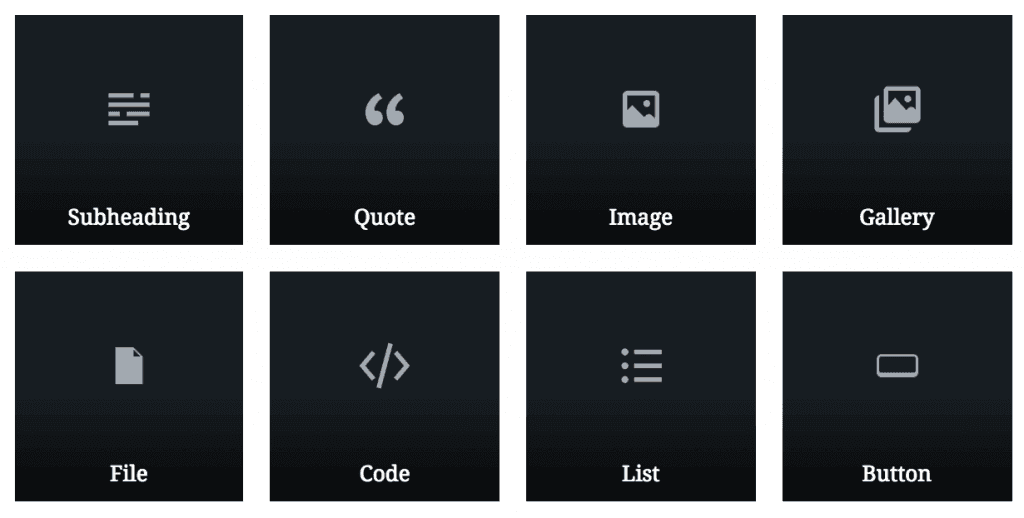The Gutenberg editor is coming. Are you ready yet?

Perhaps you’ve heard a few things about it, but maybe you haven’t: the Gutenberg editor. At the time of publishing this blog, the Gutenberg editor is not yet ready and it will be some time before it will actually be introduced. But what is at least certain is that the way you now create and format your content in WordPress is going to be completely overhauled. Therefore, in this article I will tell you everything you need to know about the Gutenberg editor.
What is the Gutenberg editor?
The Gutenberg editor is a completely new editor of WordPress and will replace the “classic editor” as of WordPress 5.0. If you are a customer of SQR.NL, you need to perform the update to version 5.0 yourself. The goal of the Gutenberg editor is to make adding rich content more fun and easier. The editor can be compared to the “visual composers” we know today. Nice to know: the Gutenberg editor is named after Johannes Gutenberg. He is the inventor of book printing in Europe. This had major consequences and eventually led to media (r)evolution.
What is the difference between the “classic editor” and the Gutenberg editor?
The main difference from the “classic editor” is that with the Gutenberg editor you use blocks. You can use these blocks to build your own page. You could think of it as building blocks. When the building blocks fit together well, you have a beautiful end result. But what do those blocks look like? You may wonder. There are different types of blocks. Each block represents a particular type of content. You can think about images, columns, headings, paragraphs, lists, etc.

The above image was taken from WordPress.org
What are the benefits?
- The block-based editor is very flexible. You can have individual blocks switch positions among themselves.
- Blocks are reusable. Suppose you have created a nice layout for an article. Then you can save this block so you don’t have to make it next time. Now this is a very simple example, but with complex blocks this will save you a lot of time.
- There are fewer distractions in the new editor. The advantage of this is that you can concentrate on creating content.
Are there any drawbacks?
- The Gutenberg editor is still in its infancy. Therefore, the Gutenberg editor will not immediately function optimally when it is finished.
- As of WordPress 5.0, the “classic editor” will be replaced by the Gutenberg editor. This switch can cause problems. In fact, certain themes and plugins may just stop adapting to the Gutenberg editor. If you are using any of these plugins and/or themes, it may cause problems on your website. If this happens then there is still the option of installing the “classic editor. Should you still want to use the Gutenberg editor, it is wise to look for other plugins and/or theme.
- The Gutenberg editor tries to make a block out of everything. Also, for example, of some images.
- There is no longer the ability to add videos, images, etc. to a paragraph. For this, you must then use a block. This could also be an advantage for you. It’s just how you look at it.
When will the Gutenberg editor be released?
The new WordPress version with Gutenberg Editor is expected to be released before the end of 2018. However, an exact date has not yet been announced. If you already want to use the Gutenberg editor, it can be downloaded as a plugin. NOTE: It is beta software and therefore not ready yet. This means it may still have teething problems. Therefore, first check that your website has been backed up.
Be ready!
You now know that the Gutenberg editor is coming and that it could have big implications for you. Therefore, make sure you are prepared for this update. For example, when WordPress 5.0 is launched, it may be wise to wait a while for it to become stable first. There is also an option to make a copy of your website to test the editor in it. How to do this is best checked with your web builder. In addition, it is smart to check that it has been backed up. If you purchase WordPress hosting from SQR.NL, you can easily back up your entire WordPress website through My SQR. Another option is to install a plugin that backs up for you. How to do this can be read in this customer service. Finally, it is very important to test if everything is still working. After all, you don’t want to find out too late that certain plugins no longer work on your website. Not getting there or in doubt about something? If so, please contact our support department.
In conclusion
The Gutenberg editor is already causing a stir, both positive and negative. People just don’t like change. Therefore, it will take some time before the Gutenberg editor is accepted by everyone. In addition, various block-based editors are already widely used today; so-called “visual composers. These are often created based on existing plugins or self-built editors. With the Gutenberg editor, WordPress aims for unity and ease for everyone to create good content. In any case, I eagerly await.
Are you curious about our other blog articles? Then visit our blog page.
